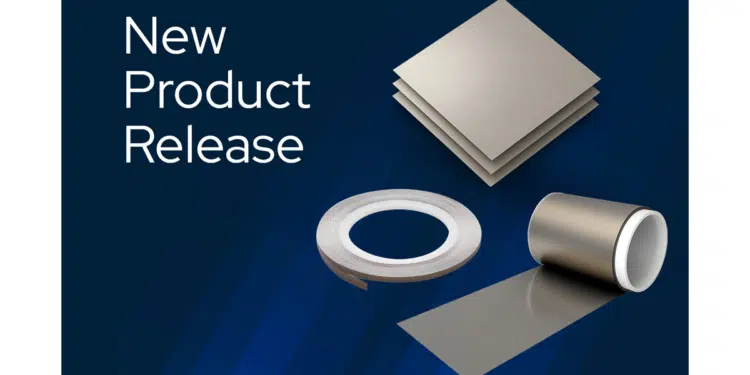FLEX SUPPRESSOR® offers a broader frequency range and reliability when designing for 5G connectivity, portable electronic devices, and automotive electronics.
KEMET, part of the Yageo Group and leading global supplier of electronic components, announces advancements in its FLEX SUPPRESSOR, a thin, flexible noise suppression sheet designed to reduce electromagnetic interference (EMI) and other noise disturbances. Its EFG3 and FS series now operate in a broader frequency range (up to 40GHz band), advancing FLEX SUPPRESSOR’s capabilities in 5G-connected devices and electronics for commercial, telecommunications, and automotive applications.
Made from KEMET’s innovative, proprietary EMI-absorbent material, FLEX SUPPRESSOR sheets help prevent noise-induced impairments, malfunctions, and total system failure from occurring. The flexible polymer material houses micron-sized magnetic metal flakes that absorb unwanted radiated noise and convert it into heat. Not only does the EFG3 and FS series absorb radiated noise, but they also prevent quasi-microwave range interference, electrostatic discharge, and desense in digital TV, 5G, WiFi, and Bluetooth devices. The EFG3 and FS series are best suited for portable, connected devices and equipment that require a compact design, including mobile phones, digital cameras, and car infotainment systems.
FLEX SUPPRESSOR is a flexible sheet that can be cut into custom shapes for any design. Additionally, FLEX SUPPRESSOR is available in a flexible tape style and can replace bulky ferrite cores for noise suppression, allowing for smarter and more lightweight cable designs. The noise suppression tape is ideal for charger, power, and interface cables used with commercial electronic devices, such as mobile phones and tablets.
Suppressing noise in electronic devices and systems is an increasing priority for design engineers as the number, proximity, and connectivity of electronics used grows globally. The 2020 Cisco Annual Internet Report (2018-2023) forecasts that the number of devices connected to IP networks will be more than three times the global population by 2023.* Also, a 2020 Technavio report estimates that the global EMI shielding market size will grow by USD 2 billion from 2020 to 2024 at a CAGR of 5.58%.*
The FLEX SUPPRESSOR EFG3 and FS series are available immediately via KEMET distributors.
Sources:
“Cisco Annual Internet Report (2018–2023) White Paper,” Cisco, March 2020
“EMI Shielding Market by Application and Geography – Forecast and Analysis 2020-2024,” Technavio, March 2020
































